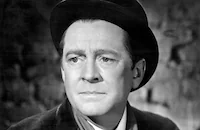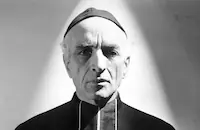Hearts in Bondage
Cast & Crew
Lew Ayres
James Dunn
Mae Clarke
David Manners
Charlotte Henry
Henry B. Walthall
Film Details
Technical Specs

Synopsis
At the outbreak of the Civil War, longtime friends and Naval officers Commodore Jordan and Captain Buchanan must chose whether to fight for the Union or return to their native Virginia. Buchanan chooses to return to Virginia, taking with him his daughter Julie, who is engaged to Jordan's son Raymond, who is also a Navy man. Jordan chooses to defend the North, but Raymond cannot bear to be parted from Julie and so he resigns to follow her and fight from Virginia. Raymond sadly bids farewell to his sister Constance and his best friend, Lieutenant Kenneth Reynolds, a Northern Naval officer who is engaged to Constance. Kenneth is given command of the mighty battleship U.S.S. Merrimack , but when he reaches his destination at Norfolk, Southern troops attack, and Kenneth is ordered to burn his ship to prevent it from falling into enemy hands. Kenneth refuses, sinking the Merrimack instead, and is dishonorably discharged soon after. Kenneth then returns to Washingon, D.C. and to Constance, but finds that he cannot get a job because everyone considers him a traitor for allowing the Merrimack to fall to the South. The Southern Navy, including Raymond and Captain Buchanan, raises Kenneth's ship and begins the slow process of making it ironclad so that they will be able to break the Northern blockade. Meanwhile, Kenneth talks his uncle, Captain John Ericsson, into submitting to a Senate committee his own design for an ironclad ship with a revolving turret. The committee is deeply skeptical of the revolutionary design, and instead awards the contract to Bushnell, a leading shipbuilder. Ericsson then meets Commodore David G. Farragut and Bushnell, whom Kenneth invites to inspect Ericsson's model of his ship, which is named the U.S.S. Monitor . The two men are so impressed with the model that Bushnell gives up his own designs in favor of Ericsson's, and they rush the Monitor into production. While it is being built, Constance learns that Raymond is third in command on the Merrimack and will therefore be fighting against Ericsson's ship. She becomes even more distraught when the Monitor is finished and Kenneth is reinstated and allowed to join the crew. She begs him not to go, but even as she swears that she will never forgive him, Kenneth tells her that it is his duty. After sailing through a dreadful storm, the Monitor arrives in Norfolk just in time, for the newly ironclad Merrimack is making short work of the Northern blockade. The two ships meet in battle, and after a fierce struggle, the Monitor is triumphant, but only after Kenneth witnesses Raymond's death. Back in Washington, Kenneth receives Jordan's forgiveness for causing Raymond's death. Constance is unable to forgive Kenneth, however, until they meet President Abraham Lincoln as they are walking, and his sorrowful but passionate urging for peace persuades her to reconcile with Kenneth.

Director

Lew Ayres
Cast

James Dunn

Mae Clarke

David Manners

Charlotte Henry

Henry B. Walthall

Fritz Leiber

George Irving

Irving Pichel

J. M. Kerrigan
Frank Mcglynn Sr.
Ben Alexander
Oscar Apfel

Clay Clement
Edward Gargan

Russell Hicks

George Hayes
Douglas Wood
Bodil Rosing
Erville Alderson
John Hyams
Etta Mcdaniels
Lane Chandler

Smiley Burnette
Frankie Marvin
Warner Richmond

Lloyd Ingraham
Hooper Atchley
Henry Roquemore
Eugene Jackson
Earl Eby
Arthur Wanzer
Helen Seamon
Cecil Watson
Maurice Brierre
Clinton Rosemond
Pat Flaherty
Sonny Bupp
Crew
Lieut. Franklyn Adreon U.s.m.c. (res.)
Bob Beche
Bill Bradford
Karl Brown
Colbert Clark
Olive Cooper
John T. Coyle
Ralph Dixon
Harry Grey
Terry Kellum
Nat Levine
Joseph H. Lewis
Wallace Macdonald
Jack Marta
Ernest Miller
Dr. Hugo Riesenfeld
Herman Schlom
Bernard Schubert
Murray Seldeen
John Stransky Jr.
Bud Thackeray

Film Details
Technical Specs

Quotes
Trivia
Notes
The working title of this film was The Glory Parade. According to Film Daily news items, Richard Carroll and Richard Schayer were assigned to work on the picture's script, but their participation in the completed film has not been confirmed. Technical advisor Lieut. Franklyn Adreon's surname is spelled Andreon in the onscreen credits. This was the only Hollywood feature film directed by actor Lew Ayres. According to the biographical file on Ayres in the AMPAS Library, he agreed to act in two films for Republic if they would let him direct one. The two Republic features he appeared in were The Leathernecks Have Landed and King of the Newsboys. In 1941, Ayres became notorious for declaring himself a conscientious objector, although he later served with distinction in a medical unit.












